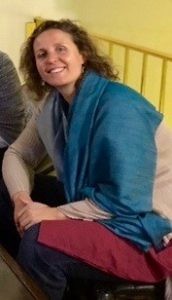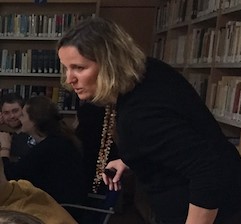Newsletter
Featured Facilitator: Almendra Staffa-Healey
Almendra Staffa-Healey
Co-Founder & Director
Intercultural Understanding
Madrid, Spain
Tell us about the context you’re using PL in.
I’ve been using PL as a tool to increase intercultural competency and leadership skills. I’m passionate about the educational context and use it with parents, university students studying abroad, international educators, as well as with local schoolteachers. I was first introduced to PL when I was working on increasing my own intercultural competency. I was amazed at how the principles and practices allowed me to go deeper into understanding my frameworks and worldview. I was especially impressed with the Critical Moment Dialogue as a tool to unravel the challenging task of making better decisions that aligned with appropriate and effective choices in situations of cultural difference or difficulty.
Professionally, I first started using PL with parents within the context of raising children in an increasingly diverse world. I am very interested in Third Culture Kids and Cross-Cultural Kids, being that I am one myself and that I’m raising two. This led me to work on translations into Spanish of the PL materials, and I’ve since been developing them as I now proceed to train parents in increasing leadership skills and showing up at their highest and best as mothers and fathers.
Throughout the academic year I work with a number of US university programs in Spain in intercultural competency development. In particular, I’d like to point out my work with university students where I integrate PL into IDI® guided developmental coaching. I work with a self-selected group of students from Georgetown University in Madrid and I use the practices as a means to gain greater insights into understanding the experience abroad, especially around cultural differences and similarities. My students practice attending to judgment, emotions and physical sensations and also practice engaging ambiguity as they reflect upon their cross-cultural interactions.
With regards to international educators, I also have trained the staff of EUSA Academic Internships in PL. This is a nonprofit organization that immerses US university students in new professional, social and linguistic cultures, promoting the advancement of intercultural understanding though the integration of learning, working, and living abroad. This multinational organization runs programs in London, Dublin, Paris, Prague, and Madrid.

More recently I’ve begun training primary school teachers in a public school in Madrid in mindfulness as well as other PL practices. This training’s special focus was on the Critical Moment Choice Point and increasing Emotional Intelligence. With this introduction of PL into the Madrid public school system, new possibilities are opening up and I look to train more teachers by means of the teacher training centers, the Centros Territoriales de Innovación y Formación (CTIFs). Madrid’s public school system has seen an increase in diversity amongst its student population and there is great interest in building intercultural competence amongst the teachers and administrators.
Why PL?
PL is an amazing methodology. What I like best is that by using PL you actually practice integrating cognitive knowledge with a reflective framework, and this helps you to build skills to transform your behavior in a more positive and successful manner.
What exercise or tool is your favorite and why?
“What State are You In?” is my favorite exercise because I get to see faces light up when the connection between expanding and focusing emotions is made. There is a sense of awe at understanding that we need both types of emotions in order to grow. I love that!
Leave us with one word to describe your personal PL journey in 2017.
Growth.







Social